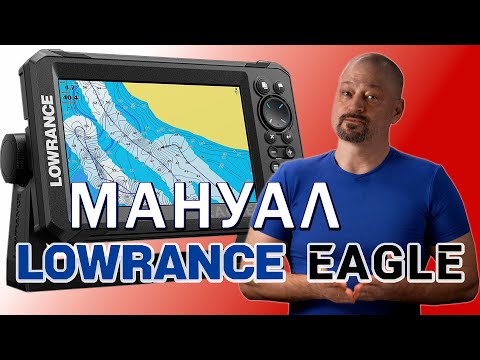Adapting to Our New Climate

it will take years even decades to develop the innovations we'll need to reach net zero emissions by 2050. in the meantime we'll have to find ways to adapt to the effects of climate change that are already happening of course depending on your circumstances what will be required to adapt may be quite different some will need to find ways to withstand severe storms and flooding while others will need to endure droughts water shortages or wildfires whatever weather related events each of us confront having to adapt to climate change is something we all will share in this lesson you'll discover how scientists are developing new crops to meet changing conditions what rising sea levels may mean for hundreds of millions of people around the globe and an ingenious way that we might be able to remove carbon dioxide from the atmosphere by relying on the world's beaches most of us have probably experienced some consequence of climate change already unfortunately the frequency and severity of these events will get worse when erratic weather strikes or when extreme temperatures occur it can be devastating when you're a farmer however you are particularly dependent on the weather warmer air temperatures cause the soil to lose moisture making it harder to grow crops plant-eating insects will migrate to new areas that never had to contend with them before cows and sheep will eat less and produce less milk worldwide about two-thirds of people in poverty work in agriculture many on farms that are less than four acres of land these smallholder farms are valuable sources of food for both families and communities there are over 500 million of them around the globe largely in developing countries and climate change will have a disproportional impact on them if these farms are to continue to be productive and thrive then farmers are going to have to find ways to adapt to more volatile conditions the ability to grow food as weather conditions change is something we all depend on but for small holder farms the stakes are especially high if a crop fails the result can be much more than just losing food and income it could mean losing a way of life an organization whose mission is to help ensure that farmers can better adapt to the effects of climate change as a consultative group for international agriculture research or one cjirr as it's now known founded in 1971 to bring together various international research centers one cjiar's primary focus is addressing food security issues anna maria lobo guerrero is head of global policy research for one cjiar some of the main challenges that smallholders have right now it's really being able to make small decisions such as when to plant when to apply the water when to apply the fertilizers but what has been happening in the past decades is that it is really hard to know when you will have this climate variability in terms of for instance not having rainfall or having too much or high temperatures so these extremes are the ones that have been changing a lot and therefore for farmers it's really hard to understand and to know what's the best decision in terms of how to manage their crops basically what we do is to work together with a variety of stakeholders to really being able to transform food land and water systems under a climate crisis so what we do it's research but not only research we make sure that our research is benefiting millions of stakeholders in food systems around the world of all the projects won cjiar has initiated for adapting to climate change their work on developing drought-tolerant and stress-tolerant maize or corn are among the most significant mace is one of the most important cereals around the world just to give you an idea of the magnitude of this 1.2 billion people in sub-saharan africa and latin america consume maize and it's one of the most important sources of food in their plates also it provides 30 percent of the calorie uptake of these households it's also used to feeding animals drought was one of the most important things that was decreasing the productivity of of mace in many countries so this was a long-term project in terms of funding in terms of capacity building which is very important and in terms of providing the right incentives so that the farmers would use this the varieties that were developed by the cgr at the end of the day we ended up with more than 200 new maze varieties that were resilient to drought and that benefited around 48 million african people [Music] through the techniques that we are using to develop these varieties we are considering in our research issues such as for instance local cooking characteristics because you can have the best variety that responds really well to droughts but then if it doesn't taste the way that farmers are used to farmers are not going to use it so it's not convincing them to use them it's very much doing the research and coming up with these varieties in a way that we are considering those social factors into our research and therefore into the product that we are delivering so it is not anymore the scientist by himself by herself working in the laboratory coming up with these brilliant ideas that has not worked we really need to understand how these ideas are tailored to specificities on the ground how do they relate with social variables and with the social dimension in general breeding new varieties of drought-tolerant and stress-tolerant maize can take years so farmers don't immediately benefit from one cjiar's research for some time it's also very expensive but their scientists see results another case in point is a type of rice that can withstand long-term flooding cleverly nicknamed scuba rice this cuba rice is a really interesting case uh it was developed but by one of the one cgr centers the international rice research institute also in collaboration with the university of california and the idea is that by using biotechnology techniques and tools we were able to produce a new variety of rice that could survive two weeks after after they were underwater because of flooding so as you know in asia there are lots of problems in relation to flooding so we were able to deliver this new rice variety that responded better to these floods and this has been benefiting more than eight million farmers that are already using this new variety and of course that they are increasing their incomes but also increasing their food security because they are not losing their crops when these floods come advances like these don't just help farmers in the face of climate change however they are part of the of the group that are going to be affected in terms of their livelihoods in terms of their incomes but it's going to affect everybody because remember that farmers are the ones that are responsible for providing food for the whole population in the world so people would be affected in terms of prices for example uh because of their reduction of yields because of changes in climate but that's one side of the coin but then you need to consider the other side of the coin which is the one related to greenhouse gas emissions and mitigation so even though the agricultural sector it's very much affected by climate change it's also one of the most important contributors to climate change and and this is because there's some greenhouse gases that have a huge potential to warm the environment one of those gases is methane and methane is part of what livestock do it's just the way that their stomach digests the food that they eat through this digestion they emit this methane and rice it's another crop that emits betaine there's one special that we have working a lot it's called alternate wetting and drying it makes a better use of water while growing rice but then it can reduce almost 70 percent of the methane that that rice crops could emit another successful initiative by one cgiar has been introducing technology into smallholder farming these projects called climate smart villages allow farmers to use information about climate variability to increase their crop yields are communities where the cgr research program on climate change agriculture and food security ccaps has been working for the past 10 years and the idea is that in these places we co-generate knowledge with the communities in relation to where the practices and technologies that can promote food security increase productivity but at the same time that can help to build resilience against climate viability and extremes many times farmers feel that those forecasts in terms of of climate so precipitation temperature that it's it's really hard to understand what all that it's about and therefore they don't use this information but when you start co-generating this information with farmers from the very beginning a totally different thing starts to emerge and is that these farmers get really interested in understanding this information and therefore they use it so what we have been doing in many places latin america africa and asia is to co-develop with holder farmers this climate information so they understand what it's all this is about and they observe what is happening with their mace with their rice with their beans and then they can make these relationships that sometimes us in our laboratories are not able to observe so what what this uh way of doing research is bringing into the table it's really working together getting the best of our research getting the best of the knowledge from farmers indigenous people putting this information together and then really make been been sure that this information is going to have an impact in the lives of these smallholder farmers all of these programs by one cgiar provide hope for smallholder farmers but the reality of climate change remains daunting while we were producing our research and innovation strategy for 2030 we did many analysis in terms of the magnitude of the challenge and what we saw was if we don't really work in terms of producing knowledge and innovation in agriculture in environment that it's in line with the climate targets what we would be seeing is that the number of undernourished people around the world would go up to 820 million people by 2030 and also because of climate extremes will have people having to move having to be relocated on a number around 200 million people by 2050. so this is
going to have huge consequences in terms of undernourishment in terms of food security and in terms of the likelihoods of people that would have to get away from the places where they are because of crisis in relation to water and because their souls are not suitable anymore to grow the crops that they were used to grow the issues related to forced migration because of climate change will not only affect smallholder farmers and populations in developing countries coastal cities and communities around the world will also face these challenges as sea levels rise paul edwards is director of stanford university's program on science technology and society and one of the authors of the ipcc six assessment report released in august 2021 sea level rise comes from a multitude of sources mainly from the expansion of the water in the ocean it's known as thermosteric expansion that makes the sea bigger just like it it expands freeze water water also expands when it get when it warms so about half of the the sea level rise is caused by ocean expansion the rest is coming from the melting of land ice glaciers on land which are melting all over the world 95 percent of the glaciers in the world are in retreat and from the great ice sheets of greenland and antarctica which are melting ever faster and we have some concerns about really major increases in melting that we've seen recently at the temperatures we're about to experience of one and a half to three degrees probably sometime this century sea level will rise enough in the long run to inundate coastal cities especially in asia we're already seeing that in south florida for example where miami beach has regular floods that are increasing in frequency and causing the city to have to try to raise the sidewalks and things like that but those are just you know tiny adjustments they won't work in the long run to keep our cities from being inundated so we will have to pull back from the coasts as as the sea level continues to rise there is time to do that because it's a slow process uh it's only about four millimeters a year but it's increasing and we expect it to hit us ever harder as time goes on i think the easiest way to get at the question of risks to coastal cities is to just talk about some experiences i've had in florida part of my family lives in the fort lauderdale area and when i visit them i hear them and their friends talking about when should we sell our house because it's going to be threatened by sea level rise soon and we don't want to lose all its value now only a few people are probably thinking that way right now but more and more people will think that way over time and there you know it will start as a trickle and then it'll become a flood of people abandoning uh places near the coast and trying to find somewhere else to move with sea levels rising countries will need to address what they will do where coastlines are under threat so you sort of have two choices you can spend mountains of money on sea walls to protect a particular place and that'll work for a while or you can manage that retreat and say you know some of these buildings are gonna go and we're gonna just assume that and move back california is actually just now initiating a system for buying the land of property owners along our some parts of our coast where they're threatened by sea level rise grace to recycle at the paris climate accords in 2015 196 countries agreed to limit global warming to 1.5 degrees celsius compared with pre-industrial levels to achieve this global greenhouse gas emissions would need to peak as soon as possible in order to reach net zero by mid-century i am not optimistic about our ability to stay within that limit partly because all the modeling we've done that shows possible ways to get there involves not only reducing emissions to zero very quickly but also removing carbon from the atmosphere after that what they call negative emissions and yes there are ways to do that but there is no way yet to do it efficiently and i hope somebody listening to this is going to invent some fabulous way to remove carbon from the atmosphere so we can manage it and stay within that limit but right now we don't have that tool in addition to advances in point source carbon capture and direct air capture there are people working on other ways to remove co2 from the atmosphere so we can better adapt to and hopefully mitigate some of the effects of climate change grace andrews is the director of scientific operations for project festa project vesta is an organization that is fundamentally committed to helping people thrive in the face of the climate crisis and we are doing that by developing a negative emission technology called coastal carbon capture which actively removes carbon dioxide from the atmosphere and moves it into the ocean in a safe and stable form fundamental scientific principle that underpins coastal carbon capture is something called chemical weathering which is a natural process that happens all the time all around us so it happens in your backyard every time water comes into contact with rocks so every time it rains it happens every time you water your lawn this is happening and this is removing carbon dioxide from the atmosphere and this process of chemical weathering is the process that has regulated earth's atmospheric co2 levels on geologic time scales anyway so for billions of years and this process although very effective at controlling atmospheric carbon dioxide levels is relatively slow so what project best is trying to do is simply accelerate this process so that it happens a little bit more quickly and is useful for mitigating climate change to reach this goal project vesta is hoping to use a substance called olivine which gets its name from its pale green color the idea of using olivine to remove carbon dioxide from the atmosphere has been around for about 20 years olivine is a mineral it is a naturally forming mineral that is incredibly common it's found just about everywhere unlike most minerals it has a very special property to it that when it comes into contact with carbon dioxide and water it chemically reacts it dissolves very slowly and that chemical reaction transfers carbon dioxide from the atmosphere into the water and by that way removes carbon dioxide from the atmosphere and helps to mitigate climate change once that carbon is in the water it stays in the water for thousands of years at a minimum we talk about the residence time of water in the ocean so once it's in the water it circulates through the ocean and it gets removed from the surface layer of the ocean down to the bottom of the ocean and then it takes a few thousand years for that to come back up now once it comes back up there is the chance that it could exchange with the atmosphere again depending on the levels of carbon dioxide in the atmosphere at that future point in time but right now we don't know what the concentration of co2 will be in the atmosphere in a few thousand years so we don't know what will happen to the carbon at that point since coastal carbon capture would mean spreading olivine on peaches one of the first questions people ask is whether it would turn shorelines green no that is a misconception we will not be turning any beaches green so olivine as a mineral when it is in sort of a large grain size is quite green in color it's really pretty actually but when it is in a powdered or sand sized it's more of a white color slightly white pale green color another question is how much would project vesta's technology cost right now we are estimating that coastal carbon capture will go for about somewhere between 50 and 70 dollars per ton of carbon dioxide removed from the atmosphere which makes it economically fairly competitive some comparison figures there would be direct air capture which has been gaining a lot of attention right now you know the cost estimates around that suggest that could be closer to 100 200 or more dollars per ton of carbon dioxide removed so this is a much more inexpensive option than some of these other technologies which makes it attractive so right now project vesta is still very much in the research development or r d phase we are conducting modeling studies to try and understand coastal carbon capture dynamics in different locations we are conducting laboratory experiments trying to constrain some of these physical parameters but we are also at the point where we are launching our first pilot study of coastal carbon capture so something that you know any scientist can tell you is that you know you can do all the laboratory experiments in the world but nature is very complicated and so you won't really know how well something works until you try it in nature so that is the next step that we have to take with coastal carbon capture we have launched our first pilot study it's on a beach in the dominican republic and right now we are in what we're calling the baseline monitoring phase so we have not put olivine down on the beach yet but we are taking months to really carefully study the natural chemistry and biology of the site and and characterize it from more or less every angle so that when we do apply olivine we can really robustly quantify any changes that occur once we have confidence in that safety and efficacy our hope is that in five years from now we will be capturing a million tons of carbon dioxide from the atmosphere that will multiply by 10 times for the following five years up to the 10-year mark where we will be capturing a giganton of co2 [Music] reaching this goal would mean spreading olivine on a little more than just 0.2 percent of beaches around the globe a number that scales up in a linear fashion as more olivine is deployed the greatest challenge though may not be the technology there's a technological challenge but i think the biggest challenge for coastal carbon capture is social license you know coastal carbon capture it happens on beaches and it only works when we work with communities so it requires that communities want to work with us and i think rightfully so people are often a little bit scared of the unknown a little bit scared of taking risks you know it's because we messed with the planet that we got ourselves into the climate change problem to begin with and then coming in and saying let's let's do something a little bit different can make people feel uncomfortable so i think that social license is really the biggest challenge for coastal carbon capture we are not going to put olivine down anywhere before we know it's safe you know project fest is here because we we care about the planet we want you know we're here because we are fundamentally committed to trying to help you know the the earth recover from from damages that have been done we have no interest in hurting the planet and you know we work really closely with you know regulating agencies so this is not something that what can just be done without consent from all relevant parties from all stakeholders you know we're not working anywhere where we're not going through the rigorous permitting process and meeting the permitting standards there is often a distrust around scientists and scientific motivations and i hope that people watching this can begin to understand that the people that are behind these technologies and that are committing their lives and their careers to the development of this work we are just regular people that are in this because we care about our own families but also because we care about your family you know we are doing this because we care about planet earth and about humanity you know as a scientist i have confidence that we can develop the technologies to remove carbon dioxide from the atmosphere or to limit carbon emissions to the atmosphere so it's not a question of if we can do it but whether we want to do it as a society you know we can invent the technology but unless people want us to deploy it want us to be working with them then all the technology in the world doesn't do us any good [Music] you
2022-04-20 15:43


